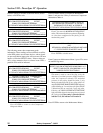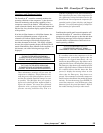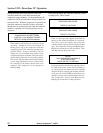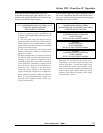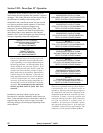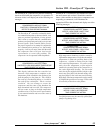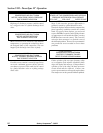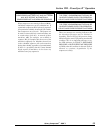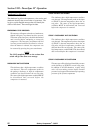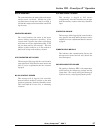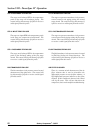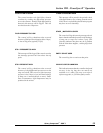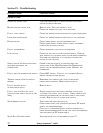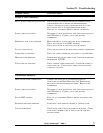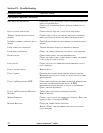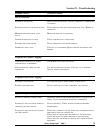
Section VIII - Power$ync II
™
Operation
66 Quincy Compressor
®
- QSD™
Shutdown Log Messages
The shutdown log allows the operator to view service and
shutdown alarms in the reverse order of occurrence. The
log gives a plain English message that will identify the
source of the alarm. These messages include:
EMERGENCY STOP PRESSED
This message will appear when the red, mushroom-
shaped emergency stop button has been pressed.
The nature of the emergency should be determined
and corrected before attempting to restart the
compressor. The emergency stop button will lock
in when pressed and must be turned to release.
Once the button is released, the compressor can
be restarted by pressing the green start button.
NOTE
The HAT snapdisk probes or the coolant flow
switch will give the same error mesage.
DISCHARGE HAT SHUTDOWN
This indicates that a high temperature condition
was detected. There are temperature probes in
the package discharge. A high air temperature
condition was detected above the set trip point.
The cause of the high temperature condition MUST
be determined and corrected before the
compressor is restarted.
STAGE 2 IN HAT SHUTDOWN
This indicates that a high temperature condition
was detected. The temperature probe at the input
to STAGE 2 detected temperature above the set
trip point. The cause of the high temperature
condition MUST be determined and corrected
before the compressor is restarted.
STAGE 1 DISCHARGE HAT SHUTDOWN
This indicates that a high temperature condition
was detected. The temperature probe at the output
of STAGE 1 detected temperature above the set
trip point. A high air temperature condition was
detected above the set trip point. The cause of the
high temperature condition MUST be determined
and corrected before the compressor is restarted.
STAGE 2 DISCHARGE HP SHUTDOWN
This message will be displayed should the pressure
at the discharge of STAGE 2 exceed a trip point.
In addition to the HP shutdown, a safety relief
valve will vent tubing pressure before internal
pressure levels approach maximum safe operating
pressure of the system components.



